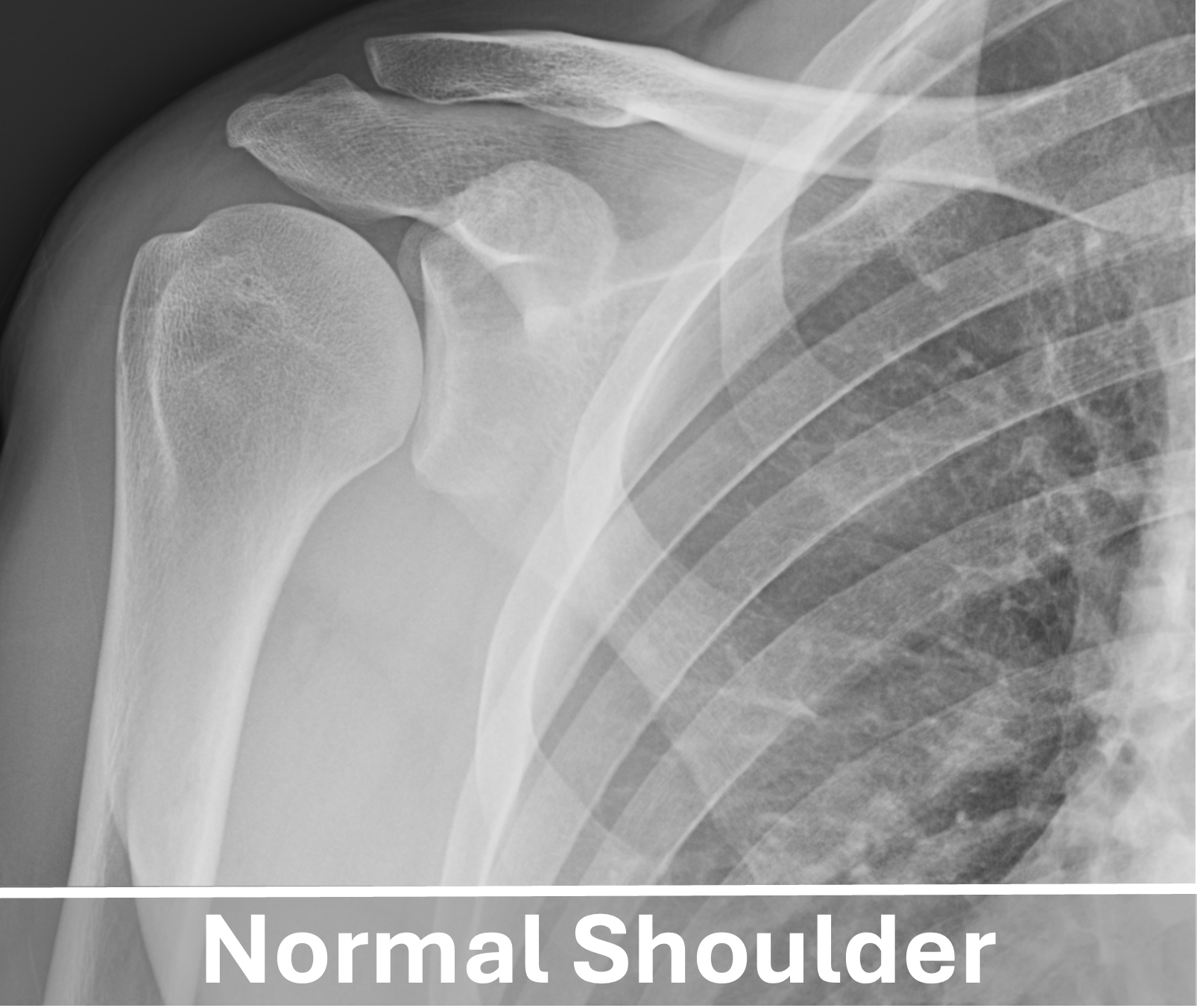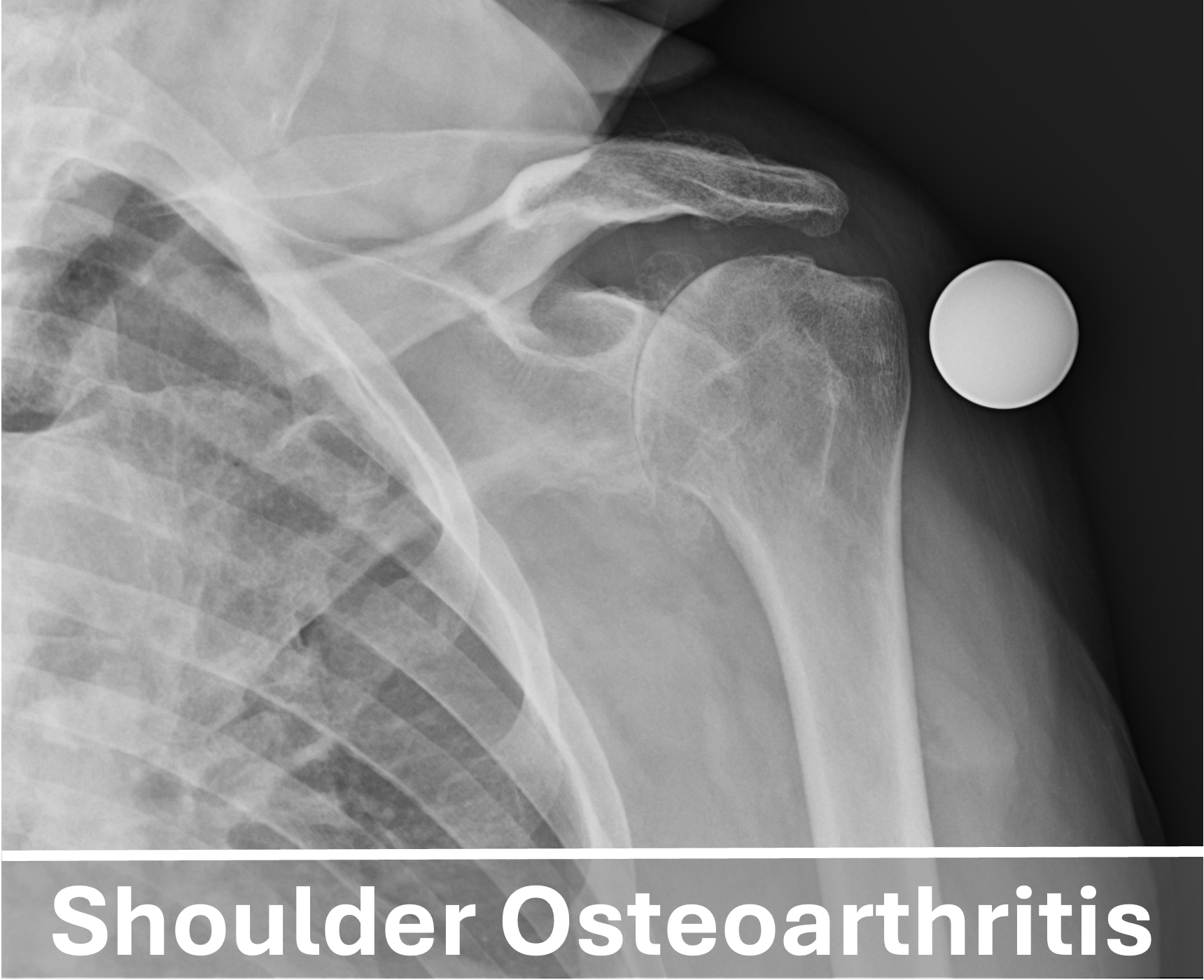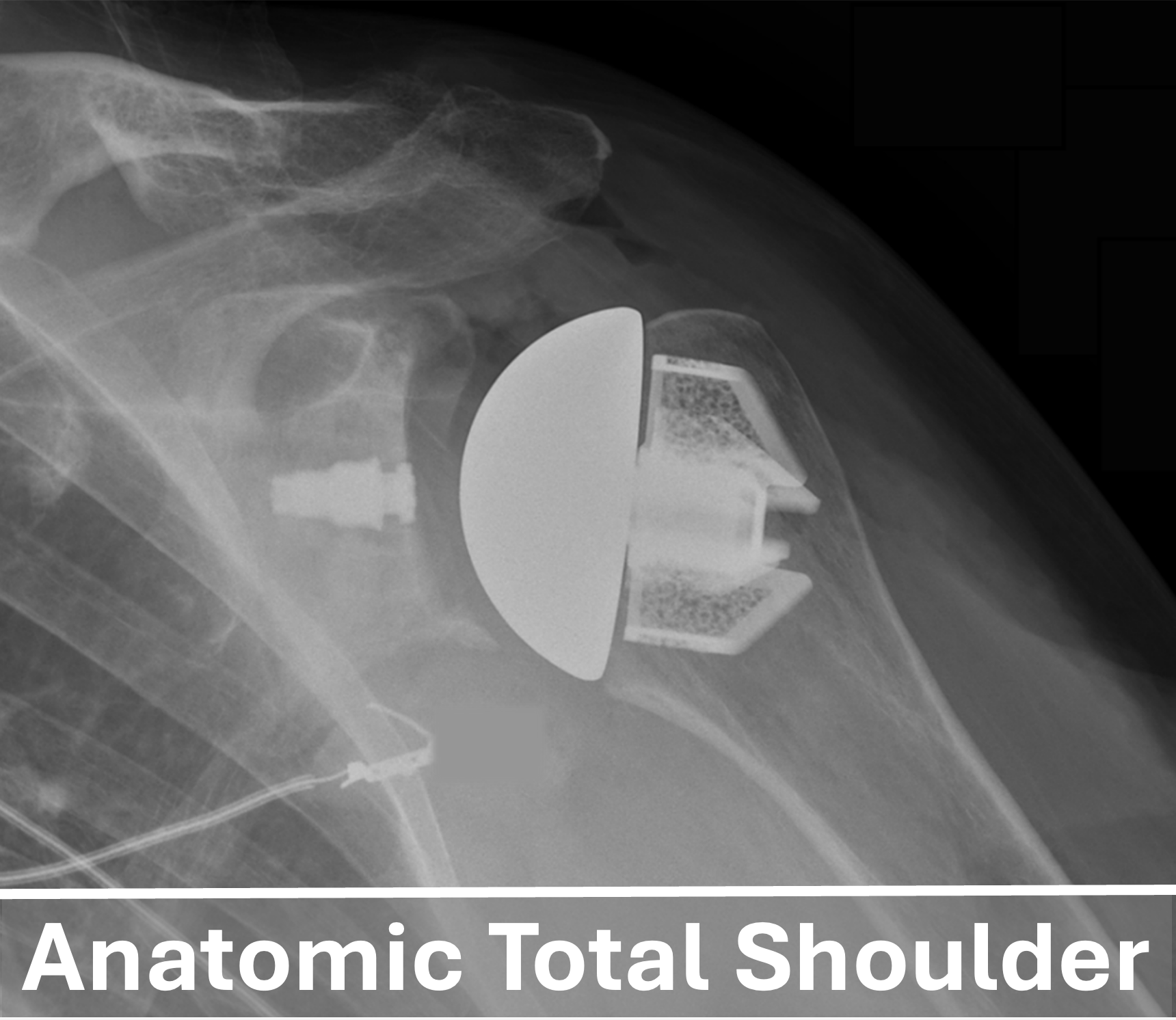Anatomic Total Shoulder Replacement (Shoulder Arthroplasty)
Erick Marigi MD – Total Shoulder Replacement Surgeon
Shoulder Arthritis

The shoulder is one of the most remarkable joints in the human body, enabling a wide range of movements such as forward elevation, external rotation, and internal rotation.
As a complex ball-and-socket joint, its proper function largely depends on the interplay of surrounding tissues: the rotator cuff, scapular stabilizers, articular cartilage, and the joint capsule. The articular cartilage acts as a protective coating over the ends of bones, facilitating smooth and pain-free movement.

In shoulder arthritis, the cartilage of the glenoid and humeral head deteriorates, leading to inflammation that causes pain, swelling, and restricted shoulder movement. This condition is quite common, affecting nearly one in three individuals over the age of 60. The most prevalent form is shoulder osteoarthritis, which results from years of degenerative “wear and tear,” particularly in physically active individuals. Other causes include rheumatoid arthritis, a chronic autoimmune disease that targets the synovial lining of joints, and post-traumatic arthritis, which develops after injuries such as shoulder dislocations or fractures.
At the present moment, there is no “cure“ for shoulder arthritis. Initial treatments focus on activity modification, physical therapy, over-the-counter anti-inflammatory medications, and occasional injections to help manage symptoms and minimize the negative impact on your quality of life. When non-surgical treatments fail to provide lasting pain relief and improved function, many individuals with moderate to severe arthritis consider a shoulder replacement, also known as a shoulder arthroplasty.
What is an Anatomic Total Shoulder Arthroplasty (TSA) ?

An Anatomic Total Shoulder Arthroplasty (TSA) involves resurfacing the arthritic ball-and-socket shoulder joint. In this procedure, the damaged humeral head (ball) is replaced with a metal component, while the glenoid (socket) is replaced with a high-strength plastic component. This combination allows for the restoration of the shoulder’s natural ball-and-socket structure thereby reducing pain and improving shoulder function.
A stemless Anatomic Total Shoulder Arthroplasty is a modern variation of this procedure. In this approach, the humeral head (Ball) is replaced with a bone-preserving “stemless” metal porous coated component that sits near the cut surface of the humerus, eliminating the need to remove more of the native bone. The advantages of a stemless total shoulder arthroplasty include less bone removal, a quicker operation, and reduced initial postoperative pain. Due to these positive outcomes, Dr. Marigi predominantly utilizes the stemless anatomic total shoulder technique in his replacements and has published articles highlighting its benefits.
Who is a Candidate for an Anatomic Total Shoulder Arthroplasty?
Candidates for an Anatomic Total Shoulder Arthroplasty are patients with moderate to severe osteoarthritis who have not found relief through non-surgical treatments. Ideal individuals should have a sufficient bone socket (glenoid) to support an implant and a healthy, well-functioning rotator cuff. In these cases, approximately 95% of patients experience excellent pain relief, high satisfaction, and a sustained return to their desired activities.
In cases where there is severe bone loss on the glenoid (socket) or the rotator cuff is irreparably damaged, Dr. Marigi recommends a reverse total shoulder replacement. An anatomic total shoulder arthroplasty relies on an intact rotator cuff for proper function. If the rotator cuff were to degenerate and tear in the future, the anatomic total shoulder may not function effectively, potentially necessitating another procedure. Therefore, to minimize the risk of revision surgery, patients with significant bone loss or rotator cuff damage are often better suited for a reverse total shoulder arthroplasty.
What is the Recovery Process After an Anatomic Total Shoulder Arthroplasty
- Following surgery, Dr. Marigi and your care team will closely monitor your progress, manage discomfort, and prepare you for your at-home recovery. Some patients may spend a night in the hospital, but most will recover at home or in a hotel if they are visiting from afar.
- To protect and support your shoulder, you will wear a shoulder immobilizer for 6 weeks. Most people can return to normal daily activities, like dressing and grooming, within the first two weeks.
- Supervised physical therapy is typically required for approximately 3 months post-surgery, or longer if specific sporting activities are planned. Full recovery, allowing a return to all activities, can take between 6 months to a year.
If you are considering a shoulder replacement (shoulder arthroplasty) or want to learn more about the stemless anatomic total shoulder arthroplasty, contact Dr. Erick Marigi, an orthopedic shoulder surgeon serving the communities of Jacksonville, Florida and beyond.